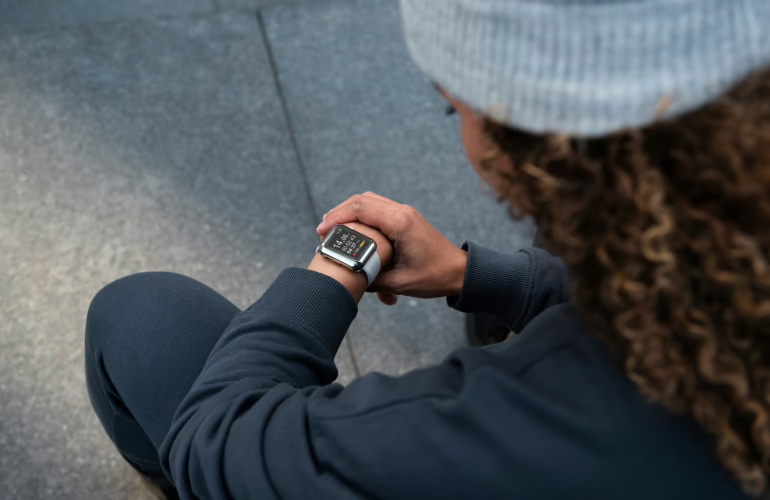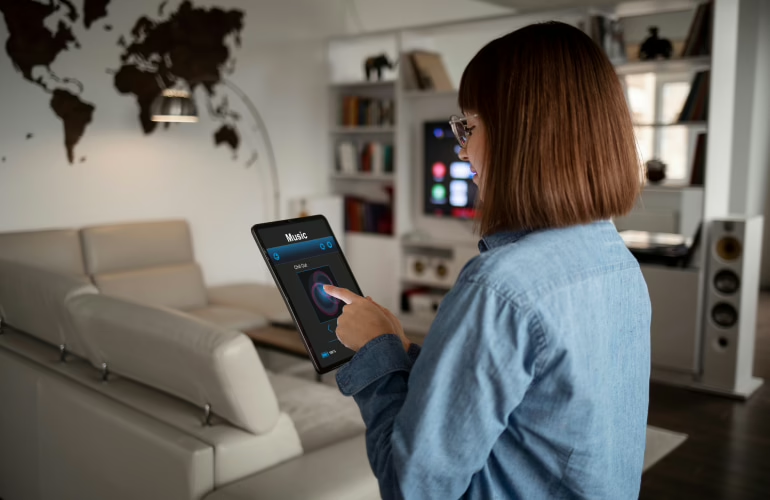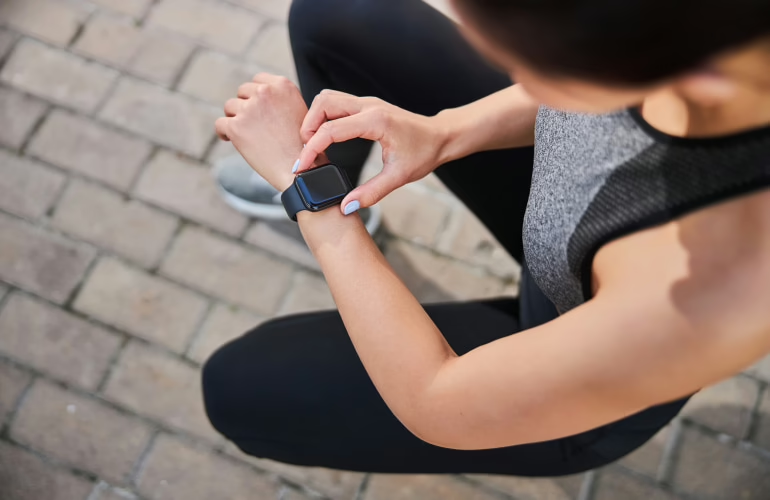Advertising Disclosure
How to Connect Wireless Logitech Keyboard
In today’s fast-paced digital world, efficiency and convenience are key to productivity. You’ve come to the right place if you’re wondering how to connect a wireless Logitech keyboard. Whether you’re a busy professional, a creative artist, or a casual user, a wireless keyboard can transform your computing experience.
Imagine the freedom of typing from your couch or easily switching between devices without tangled cords. That’s the beauty of a wireless Logitech keyboard. But how do you set it up? Don’t worry; we’ve got you covered.
This comprehensive guide will walk you through connecting a Logitech keyboard seamlessly. We’ll explore different connectivity options, provide step-by-step instructions on pairing Logitech keyboards, troubleshoot common issues, and even delve into customization features. By the end, you’ll be a wireless keyboard pro!
At Shopper Advocate, we’ve tested numerous Logitech keyboards, considering factors like ease of setup, reliability, and user experience. We aim to help you make the most of your device, ensuring a smooth transition to wireless typing.
So, whether you’re unboxing a new keyboard or troubleshooting an existing one, let’s dive in and unlock the full potential of your wireless Logitech keyboard.
Understanding Wireless Connectivity Options for Logitech Keyboards
You have two main connectivity options for wireless Logitech keyboards: Bluetooth and USB receivers. Each has advantages; the best choice depends on your specific needs and devices.
- Logitech connect keyboard via Bluetooth is increasingly popular due to its versatility. Most modern devices, from laptops to tablets and smartphones, have built-in Bluetooth capabilities. This means you can connect your Logitech keyboard without using a USB port.
- On the other hand, USB receivers, often called “dongles,” offer a plug-and-play solution to connect wireless Logitech keyboards. They’re ideal for older devices without Bluetooth or users preferring a more stable connection. Many Logitech keyboards come with a Unifying Receiver, which can connect multiple compatible Logitech devices to a single USB port.
When choosing a Logitech keyboard, consider your devices and usage. A Bluetooth model might be best if you frequently switch between a tablet and a computer. A USB receiver could offer simplicity and reliability for a dedicated desktop setup.
Bluetooth Connectivity: How It Works
Logitech keyboard Bluetooth connect technology operates on a simple principle: pairing devices for wireless communication. When you activate the pairing mode on your keyboard, it becomes discoverable to nearby Bluetooth-enabled devices. Your computer or tablet then recognizes the keyboard and establishes a connection.
The pairing Logitech keyboard process requires devices to be nearby, typically within 33 feet (10 meters). Modern Bluetooth versions offer improved range and stability. Most Logitech Bluetooth keyboards use Bluetooth 4.0 or higher, ensuring efficient power usage and quick connections.
Remember, Bluetooth keyboards may require periodic recharging or battery replacement. However, they offer the advantage of not occupying a USB port, which can be crucial for devices with limited ports.
USB Receiver Connection: Setup Process
Connecting a Logitech keyboard via a USB receiver is straightforward. Simply plug the small USB dongle into an available port on your computer. In most cases, your operating system automatically recognizes the device and installs the necessary drivers.
Many Logitech keyboards come with a Unifying Receiver, a special USB dongle that can connect up to six compatible Logitech devices. It is particularly useful for using a Logitech mouse or other peripherals, as it frees up USB ports.
You’ll need to download the Logitech Unifying Software to set up a Unifying Receiver. This program allows you to add or remove devices from the receiver, offering flexibility in your setup.
Step-by-Step Guide to Pairing Your Logitech Wireless Keyboard
Now that we understand the connectivity options, let’s walk through pairing a Logitech keyboard with Bluetooth and USB receiver methods. Follow these steps to get your Logitech keyboard up and running quickly.
For Bluetooth Keyboards:
- Ensure your computer’s Bluetooth is turned on.
- Press and hold the Bluetooth connect button on your Logitech keyboard (usually marked with a Bluetooth symbol).
- Open your computer’s Bluetooth settings and select “Add a device” or “Pair a new device.”
- Look for your keyboard model in the list of available devices and click to connect.
- If prompted, enter the pairing code on your screen using the keyboard.
- Once connected, your keyboard is ready to use!
For USB Receiver Keyboards:
- Locate the USB receiver that came with your keyboard. It’s often stored in the battery compartment.
- Plug the receiver into an available USB port on your computer.
- Turn on your Logitech keyboard using the power switch (usually located on the back or side).
- Wait a few moments for your computer to recognize the device and install any necessary drivers.
- Your keyboard should now be connected and ready to use.
For Unifying Receiver Setup:
- Download and install the Logitech Unifying Software from the official Logitech website.
- Plug in your Unifying Receiver and launch the software.
- Click “Add a device” and follow the on-screen instructions to pair your keyboard.
- Repeat the process for any additional Logitech devices you wish to connect.
Remember, these steps may vary slightly depending on your Logitech model and operating system. Always refer to the user manual for model-specific instructions on how to set up the Logi keyboard.
Troubleshooting Common Connection Issues
Even with the best keyboards, you might encounter some hiccups. Here are some common issues and their solutions:
Keyboard not connecting:
- Ensure the keyboard is charged or has fresh batteries.
- Check if the USB receiver is properly plugged in or if Bluetooth is enabled on your device.
- Try moving the keyboard closer to the receiver or computer.
Keys not responding:
- Turn the keyboard off and on again.
- Remove and reinsert the batteries.
- Try connecting to a different USB port if using a receiver.
Lag or delay in keystrokes:
- Move the keyboard closer to the receiver or computer.
- Check for interference from other wireless devices.
- Update your keyboard’s firmware through the Logitech Options software.
Connection drops frequently:
- Replace the batteries or recharge the keyboard.
- Update your computer’s Bluetooth drivers.
- Try resetting the keyboard by pressing the reset button (usually located on the bottom).
Unifying receiver not recognizing devices:
- Ensure you’re using the Logitech Unifying Software to add devices.
- Check if your devices are Unifying-compatible (look for the orange Unifying logo).
- Try re-pairing the devices through the Unifying Software.
If problems persist when connecting a wireless Logitech keyboard, don’t hesitate to contact Logitech’s customer support. They offer excellent assistance for troubleshooting and resolving issues with their products.
Customizing Your Logitech Keyboard Settings
One of the greatest advantages of Logitech keyboards is their customization potential. With the Logitech Options software, you can tailor your keyboard to your specific needs and preferences.
To get started with Logi keyboard setup:
- Download and install Logitech Options from the official Logitech website.
- Connect your Logitech keyboard to your computer.
- Open Logitech Options and select your keyboard from the device list.
Now, you can explore a range of customization options:
- Key Mapping: Reassign functions to specific keys for quick access to your most-used commands.
- Custom Shortcuts: Create macros for complex sequences of keystrokes, saving time on repetitive tasks.
- Backlighting Control: Adjust brightness levels or create custom lighting effects (on supported models).
- Battery Management: Monitor your keyboard’s battery level and adjust power-saving settings.
- Multi-Device Usage: Set up Easy-Switch to seamlessly transition between multiple devices (on supported models).
Remember, available features may vary depending on your specific Logitech keyboard model. Experiment with different settings to find what works best for your workflow.
At Shopper Advocate, we’ve found that customizing keyboard settings can significantly boost productivity. Take time to explore these options and make your Logitech keyboard truly your own.
Conclusion: Enjoying the Benefits of Your Wireless Logitech Keyboard
Congratulations! You’ve now mastered Logitech connecting the keyboard and customizing its settings. Following this guide, you’ve unlocked a world of convenience, flexibility, and efficiency in your digital workspace.
Remember, proper setup and maintenance are the keys to a smooth experience, whether you’re using Bluetooth or a USB receiver. Keep your keyboard charged or batteries fresh, update your software regularly, and don’t hesitate to troubleshoot if issues arise.
The customization options offered by Logitech Options software open up endless possibilities. Take advantage of key mapping, macros, and other features to tailor your keyboard to your unique needs. This personalization can significantly enhance your productivity and comfort.
As you continue to use your wireless Logitech keyboard, you’ll likely discover new tricks and preferences. Don’t be afraid to experiment and adjust your setup over time. Your ideal configuration might evolve as your needs change.
We’d love to hear about your experiences with Logitech keyboard Bluetooth connect setups. Have you found a particularly useful customization? Or perhaps you’ve discovered a clever troubleshooting trick? Share your insights and help fellow users make the most of their keyboards.
Remember, a wireless keyboard is more than just a typing tool; it’s a gateway to a more flexible, organized, and efficient computing experience. Embrace the freedom of wireless technology and enjoy the full potential of your Logitech keyboard.
Happy typing!






